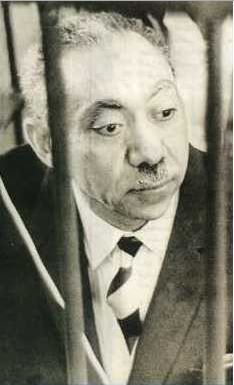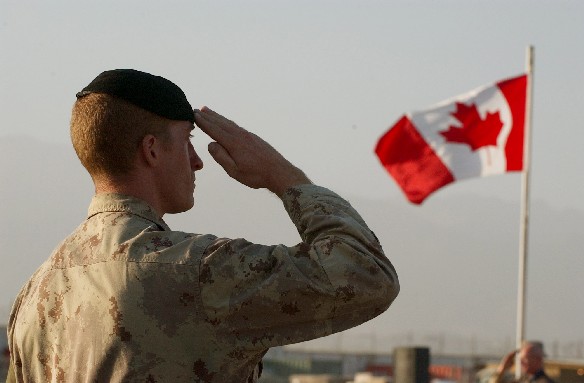
On May 2, Canada announced that it would be sending 50 soldiers to Poland to conduct joint military exercises there with 600 American as well as Polish armed forces. This marks Canada’s second deployment of forces in the area since the annexation of Crimea in March 2014, the first being the transfer of six C-18 fighter jets to the Baltic states in mid-April. The Canadian government also announced that the frigate HMCS Regina will be diverted from its current anti-terror mission in the Arabian Sea to the Mediterranean.
The Canadian deployments are part of a wider NATO effort meant to assure NATO allies in Eastern Europe that they have the full support of the rest of the Alliance. The mission comes after a dramatic increase in tensions in the region due to continuing conflict in Eastern Ukraine. NATO allies such as Estonia, Latvia and Lithuania as well as Poland have requested the troops to counter what they see as a threatening buildup of Russian military forces close to their borders. NATO members have responded with the tripling of air assets in the Baltics and a general deployment in waves across Eastern Europe
Eastern European states have good reason to worry about Russia’s actions in Ukraine. Putin’s justification for his invasion— that he is protecting Russian minorities— has important implications for Poland and the Baltic states. The latter all have significant Russian minorities, making up 5.8% of the population in Lithuania, 24.8% in Estonia and 26.2% in Latvia. In some areas, such as the city of Narva in eastern Estonia, ethnic Russians make up the majority of the population— 82% in 2010. Recent Victory Day celebrations (remembering the Soviet defeat of Nazi Germany) in Latvia have highlighted the ethnic and religious divisions in Baltic states. The celebrations are attended overwhelmingly by Russian speakers. Poland, for its part, surrounds the large Russian enclave of Kaliningrad on the Baltic Sea, where Russia keeps its Baltic Sea Fleet. In addition, all four countries have profound historical grievances with Russia, including occupation in the Baltic states and foreign control in Poland. With past conflict so fresh in their citizens’ minds, fear of Russian aggression is easily understandable.
NATO’s actions are necessary in part because of lingering uncertainty in the newly-admitted Eastern NATO states concerning the commitment of the rest of NATO to their defense. NATO’s rapid enlargement following the fall of the Soviet Union was possible in part because of a lack of determined opposition from the Russian Federation. Now, with Putin pushing back against what he sees as an expansionist, anti-Russian NATO, the Alliance is facing its first true test of unity in the region. High ranking officials both within NATO and in member governments have attempted to assuage fears. In an interview on March 19, Secretary General Anders Rasmussen stated that “no one should doubt” NATO’s ability and willingness to defend itself. The Dutch Foreign Minister, Frans Timmermans, echoed these sentiments, saying NATO would defend “every inch” of its territory. Canada, too, has pledged its firm support for the Eastern European allies.
The insecurity of NATO’s new member states in Eastern Europe has been exacerbated by the failure of Western governments to take effective action against the Russian annexation of Crimea. For those in the Baltics, it is no doubt unsettling that a state that has cooperated as closely with NATO as Ukraine could be so isolated in the face of aggression. Both Russia and Ukraine have developed unique relationships with the Alliance, yet the necessity of preserving ties with the former may come at the expense of the latter. Despite this, Poland and the Baltic states should be more confident in NATO aid in the event of a crisis, if only because a failure to protect these nations would spell the end of the Alliance. Built as it is on the trust of mutual aid and collective security, NATO as an institution cannot afford to abandon a member.
The Ukrainian crisis highlights the ambiguous political position of states in the Partnership for Peace (PfP), NATO’s cooperation program with individual countries outside the alliance. These include Sweden, Finland and Georgia, all countries geographically close to Russia. The extent to which NATO will act to protect these states is uncertain, something that could lead to renewed interest in NATO membership. Georgia has already expressed a desire to join, though discussion on the subject has been postponed due to the potential for conflict with Russia. The situation is Ukraine has also prompted renewed calls for Swedish and Finnish membership. Such actions should be undertaken cautiously. Like the NATO military buildup, they may succeed only in further deepening the NATO-Russia divide.

Like any attempt at deterrence, NATO’s efforts in Eastern Europe risk provoking the opposite of the intended response, such as an accelerated Russian military buildup. A prolonged military standoff across the border would be extremely detrimental to stability in Ukraine. On May 7 Putin announced that Russian troops were withdrawing from the Ukrainian border, yet Putin’s claim should be looked at with skepticism. He recently admitted to lying when he said there were no Russian forces in Crimea prior to its annexation— Russian soldiers were in reality coordinating closely with “self-defense” forces responsible for overrunning Ukrainian military bases. Indeed, NATO has already stated that there is no significant reduction of troop levels along the border.
Canadian troops sent to Poland mark a continuation of Canadian involvement in the military alliance. The military commitment from Canada and other NATO states is significant, indicative of the degree to which Russia is seen as a threat. For context, Canada contributed 6 CF-18s as well as various support aircraft and naval warships to active combat operations in Libya in 2011 and a single transport aircraft to the 2013 French-led mission in Mali. The prospect of conflict with Russian forces is clearly of equal or greater concern than many past operations.
Canada’s deployment to Eastern Europe is a relatively small but important part of the NATO effort there. Multilateral commitment to operations has always been a necessity in the Alliance, as a means of promoting unified action. Canada’s firm line on Ukraine, and willingness to contribute to operations on its borders, is suggestive of its assertive role both in NATO and on the international stage as a whole. Whether or not Canada and NATO’s actions lead to a more stable Ukraine, however, remains to be seen.




